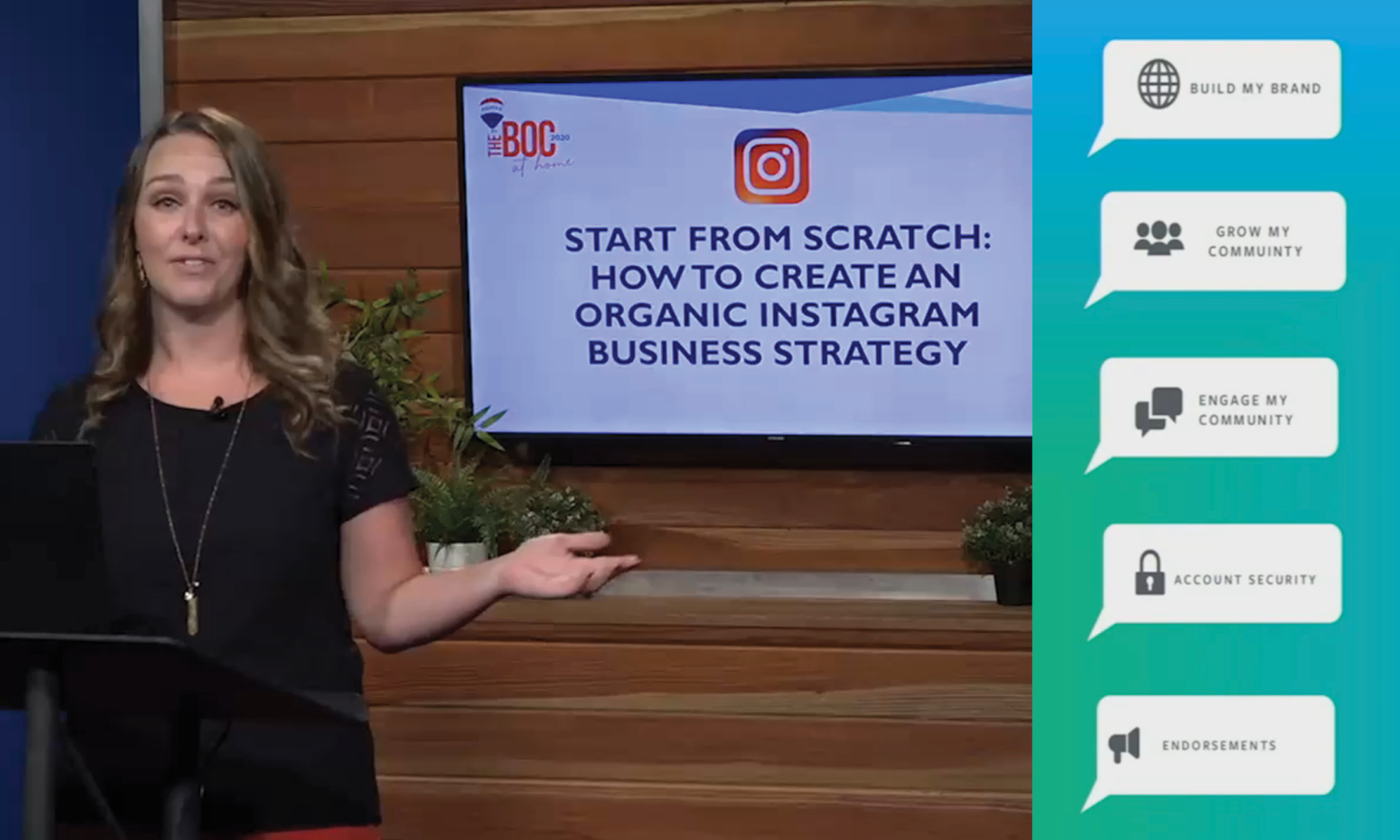Now that the social media platform Instagram has come into its own and its most frequent users — millennials in their late-twenties and early-thirties — are entering peak homebuying age, real estate professionals may be considering creating a profile for their business.
That’s why Kayla Roofe, senior social media manager with brand marketing at RE/MAX, shared some of the insights she and her team gleaned back when they created Instagram profiles for the company and CEO Adam Contos. She shared tips with attendees of the firm’s annual broker-owner conference, rebranded this year as a virtual event called RE/MAX BOC At Home and held Aug. 18 and 19.
Roofe suggested thinking about social content in three buckets: the company (where one might post about the office, staffers or thought leadership), oneself (posts that are “in the moment,” such as with family or during travel) and the world (where a user might feature fundraising efforts or showcase local businesses). “Every week you should be putting content into one of these buckets,” she told attendees.
That may sound like a tall order, but there are many ways to break the task down, and Roofe even shared tips for those who still have yet to set up an account. Here’s a look at what she suggested.
Plan it out
If you haven’t yet created a business profile for Instagram, now is the time to think through your goals. “Solve the why before you ever create a new account,” Roofe said. “Why are you starting this channel? … What do you want to achieve for your business?”
It may seem like every brand is looking for the same thing, but Roofe suggested digging deeper and creating three overall aims for your account. Some possible outcomes include brand awareness, outlet of personal creativity, community engagement, gathering endorsements and fundraising for charitable causes.

One interactive RE/MAX Instagram post encouraged followers to find the brand’s iconic balloon logo.
When setting up a new account, choose a profile photo that will work well in the small space offered on the Instagram bio screen. “You want to make sure it’s up close and personal on your face, especially if it’s a personal account,” Roofe said. She suggested layering personal and professional items in the bio section and choosing highlights (basically folders where users can save Stories) that both tie into your bio and underline your business goals, such as getting more podcast subscribers or open house traffic.
Take a holistic approach
Instagram has four basic content types — posts to the feed, Instagram Stories, IGTV and Instagram Live — and successful users figure out ways to engage in each of them. “Use the whole platform,” Roofe said. “This is what’s really going to help you reach your goals efficiently.”
The feed content — which shows up in the grid on a user’s profile page — should be cleaner and more curated than the other categories. Stories are more like little narratives (more on how to create them below). Video options include the well-thought-out, more produced IGTV, where users generally create a series of 3- to 5-minute videos, preferably on a recurring topic, such as listings or open houses, and Instagram Live, which allows users to engage with their audience via Q&As and other interactive opportunities.
But videos aren’t the only way to boost engagement. Alongside poll questions and donation stickers, Roofe offered a few examples of static posts that audiences are able to interact with, such as a hidden item in a photo or a word search. “People are there to be entertained,” she said. “Give them something to do.”

Another post engaged followers by trying to predict their next home’s style.
Once you’ve gotten a hang of each type of content, create a loose schedule to ensure you’re posting a good variety on a regular basis. “If content is king, consistency is queen,” Roofe said.
Tailor posts to the typical user
You don’t have to be young to succeed on Instagram, but you might have to shift your mindset back a few years. For example, a good social media strategy for a listing might be to post a gorgeous exterior on Facebook with a link to a slideshow on your website. But on Instagram, Roofe suggested zooming in on one feature that will appeal to millennials, such as a roof deck, game room or wet bar. “Think about how a younger audience is going to receive that message,” she said. “Save your hard sell for Facebook.”
Another targeting technique that’s particularly important for real estate professionals is tagging. Users can add up to 30 tags per post (though Roofe suggested using only around half as many on a given post “because it feels a little hungry” to add more than that). But even more important than the number is the idea of using tags that matter to your neighbors, whether that’s certain areas of the city or local slang. “Make it specific to you,” Roofe said. She added that geotags are another great option where you can add landmarks or even exact addresses to show where you’re posting from, as long as that’s information you’re comfortable with sharing with the rest of the world. “It’s a really great way to showcase your local community. … It helps people find you.”
Think narratively when it comes to Stories
Instagram Stories, posts that last 24 hours on the platform before they disappear, are best executed when users think of them like little books or movies, Roofe said. Try to plan on somewhere between six and eight panels, and bookend the narrative with an intro — preferably featuring a selfie or video of yourself explaining what’s happening or where you are — and an ending slide that tells viewers where they can go to get more information. “Anything more than that, people just stop absorbing,” she said. “They don’t want to be sold; they just want to be entertained, and that’s what stories do.”
Also, add interactive elements that complement the post. If it’s a static image with no textual clues as to what’s happening, consider typing out a few words that will add context. If it’s a video, think about what you might need to add for people who don’t have their sound on. Finally, try to mix the media you post in each part of your story, so that you have a nice mix of video and imagery, as well as GIFs and Boomerangs, which stitch photos together into a repeating visual file.
